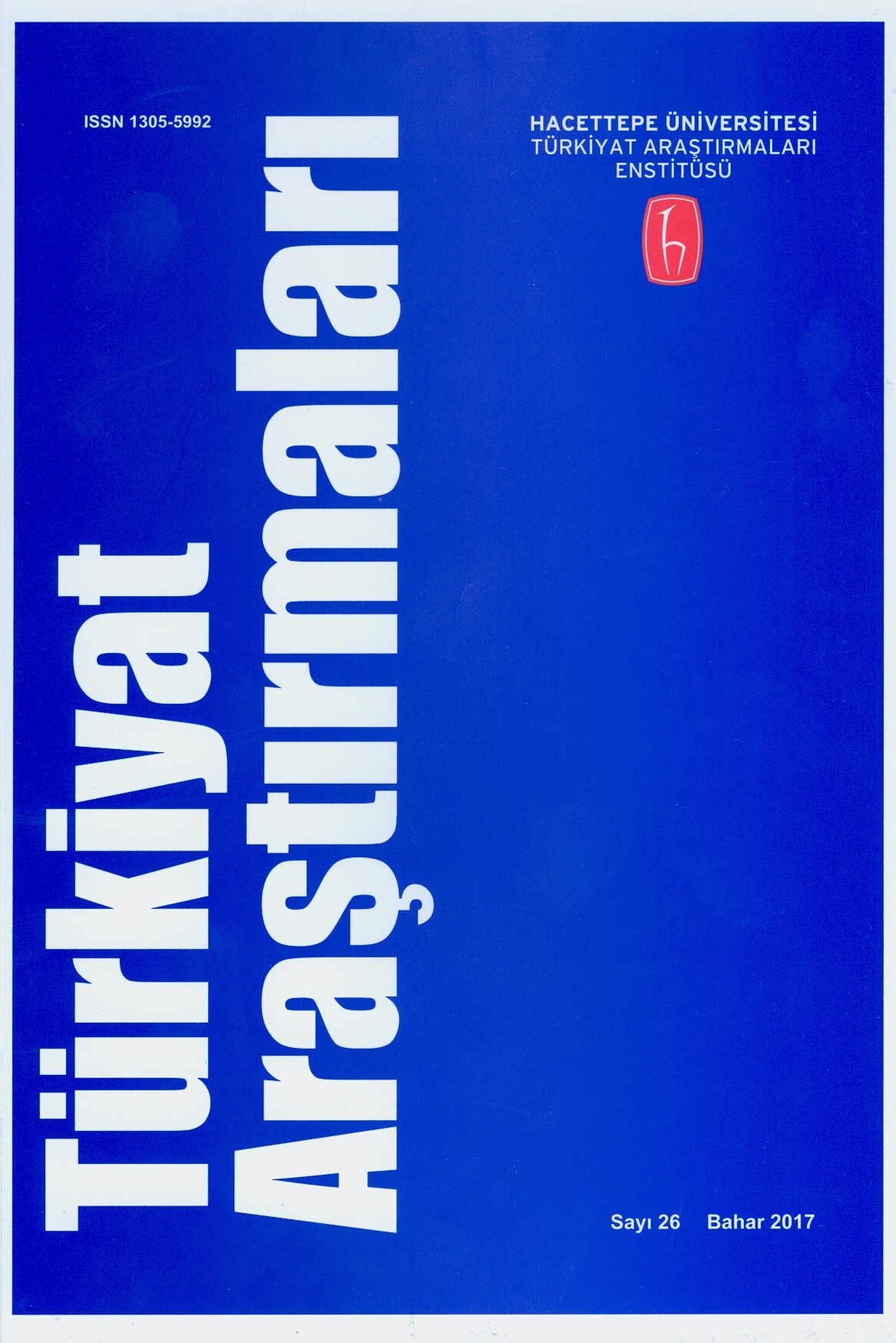ULUS İNŞA SÜRECİNDE KALEVİPOEG DESTANI VE ESTONYA FOLKLOR ARAŞTIRMALARI
Bu çalışmanın amacı Estonya Halkbilimi çalışmalarını ve KalevipoegDestanı’nın derlenişi ulus inşa süreci bağlamında ele alıp değerlendirmek vetanıtmaktır.
Anahtar Kelimeler:
Eston Halkbilimi Çalışmaları, Kalevipoeg Destanı, Dr. Friedrich Reinhold Kreutzwald, Ulus İnşa Süreci, Sözlü Edebiyat
___
- JAAGO, Tiiu, (2005). “Fredrich Reinhold Kreutzwald and the Culyural Bridge.” Studies in Estonian Folkloristics and Ethnology: A Reader and Reflexive History, Eds. K. Kuutma ve T. Jaago, Tartu, Tartu University Press, 19-42.
- KALLAS, Oskar, (2001).”Estonian Folklore” Studies in Estonian Folkloristics and Ethnology: A Reader and Reflexive History, Eds. K. Kuutma ve T. Jaago, Tartu, Tartu University Press,139-149.
- KREUTZWALD, F. R.(2007), Kalevipoeg: An Ancient Estonian Tale, Trans. J. Kurman, Tartu, Üle Ola.
- KUUTMA, Kristin ve T. Jaago, (2005a). (Eds.), Studies in Estonian Folkloristics and Ethnology: A Reader and Reflexive History, Tartu, Tartu University Press.
- KUUTMA, Kristin, (2005b). “Introduction: Constructing a Disciplinary History”, Studies in Estonian Folkloristics and Ethnology: A Reader and Reflexive History, Eds. K. Kuutma ve T. Jaago, Tartu: Tartu University Press, 9-15.
- KUUTMA, Kristin, (2005c). “Oskar Kalas: An Envoy of Cultural Heritage”, Studies in Estonian Folkloristics and Ethnology: A Reader and Reflexive History, Eds. K. Kuutma ve T. Jaago, Tartu, Tartu University Press, 121-146.
- KUUTMA, Kristin, (2005c). “Introduction: Constructing a Disciplinary History.” Studies in Estonian Folkloristics and Ethnology: A Reader and Reflexive History,Eds. K. Kuutma ve T. Jaago, Tartu, Tartu University Press, 9-15.
- SELJAMAA, Elo-Hanna, (2005). “Walter Anderson: A Scientist beyond Historicand Geographic Borders” Studies in Estonian Folkloristics and Ethnology: A Reader and Reflexive History, Eds. K. Kuutma ve T. Jaago, Tartu, Tartu University Press, 153-200.
- VALK, Ülo, (2001). The Black Gentleman: Manifestations of the Devil in Estonian Folk Religion, Helsinki, FFC Communications.
- ISSN: 1305-5992
- Yayın Aralığı: Yılda 2 Sayı
- Başlangıç: 2004
- Yayıncı: Hacettepe Üniversitesi
Sayıdaki Diğer Makaleler
MEMMED SEİD ORDUBADİ’NİN BÖYÜK GURULUŞDA PİYESİNDE SOVYET MEFKÛRESİ
İdil-Ural Tatarlarının 18. yy’da Araştırılması: Rusya İlimler Akademisi ve İmparatorluk Yaklaşım
ALMANYA’DA USTA BİR HİCİV SANATÇISI “KAYA YANAR”
MACHİAVELLİ VE KOÇİ BEY’DE SİYASET, ADALET VE ERDEM
WILHELM RADLOFF'UN HAYATI ve SİBİRYA TÜRK HALKLARININ KÜLTÜR DOKUSU ÜZERİNE GÖRÜŞLERİ
ESKİ MACAR KİŞİ ADLARINDA DOĞU UNSURLARI
Ötümlü Gırtlaksıl Sızıcı –g Sesbiriminin Türkçede Orhon Anıtlarından Beri Varlığına Kanıtlar
ÖZBEK VE TÜRKİYE TÜRKÇESİNDE “KESİNLİK” BİLDİREN MODAL SÖZLER
